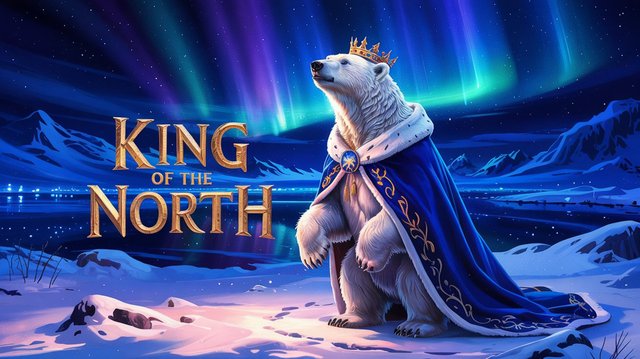The White Beast that Rules the North | Polar Bear
The Polar Bear: Ruler of the Arctic
A limited number of creatures can survive in the extreme cold of the Arctic, where temperatures can drop to -40آ°C. Among these few, one animal stands out as the undisputed ruler of this icy world — the polar bear.
Where Do Polar Bears Live?
Polar bears are found across the Arctic regions of Canada, Greenland, Russia, Norway, and the United States. Nearly 80% of the world's polar bear population lives in northern Canada.
They are typically found along coastal areas and on sea ice floes, which they use for hunting and traveling.
Size and Physical Power
Adult male polar bears can reach 2.4 meters in length and weigh over 800 kg. The heaviest polar bear ever recorded weighed more than 1,000 kg. Females are smaller, usually weighing between 200 and 300 kg, sometimes up to 400 kg.
Despite their size, polar bears are agile — they can run up to 40 km/h, swim at 10 km/h, and can smell prey from up to 32 km away.
Masters of the Cold and Sea
Polar bears are excellent swimmers. Their front paws, about 30 cm wide, act like paddles. They have a thick layer of fat (5–10 cm) under their skin to insulate them from the cold. Some have been recorded swimming continuously for 10 days, covering 600 km.
Fur, Skin, and Camouflage
Although their fur appears white, it is actually transparent. Polar bears have two layers of fur: a dense undercoat and hollow outer hairs that scatter light. Underneath, their skin is black, which helps absorb and retain heat.
Interestingly, while most animals are fooled by their camouflage, reindeer can sometimes detect polar bears because they can see ultraviolet light.
Birth and Motherhood
Cubs are born very small — about 30 to 35 cm in length and weighing less than 0.5 kg. They are born blind, toothless, and covered in soft fur. They rely entirely on their mother’s milk, which is extremely high in fat (up to 50%). Cubs stay with their mother for about 2.5 years, learning survival skills.
Mating and Reproduction
Mating season begins with the melting of sea ice. Males compete fiercely for females. Female polar bears use delayed implantation, a strategy that delays the growth of the fertilized egg until conditions are right. They dig snow dens near the coast, where they give birth after 195–265 days.
Threats to Survival
Polar bears have no natural predators, but they face two major threats: starvation and climate change. As sea ice shrinks, they must swim longer distances, using up to five times more energy than walking. This can lead to extreme weight loss and even death.
A Symbol of Arctic Majesty—and Fragility
Polar bears are a symbol of the Arctic's beauty and power, but also its vulnerability. They are apex predators, but even they are not safe from the effects of a rapidly changing climate.
“Which of these facts surprised you? Drop your thoughts below 👇”
